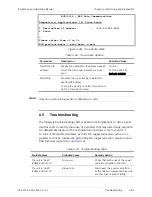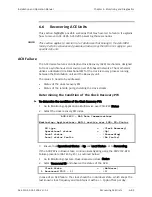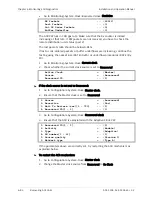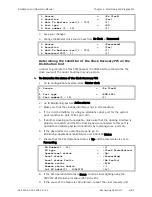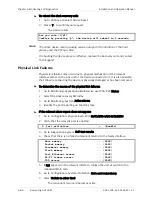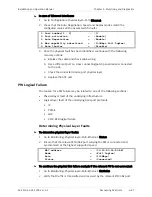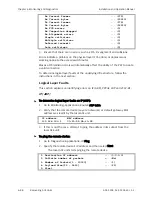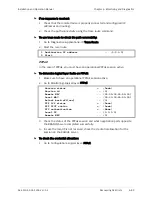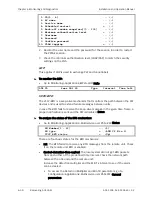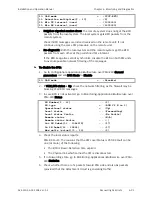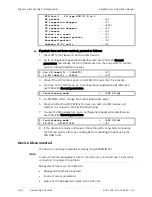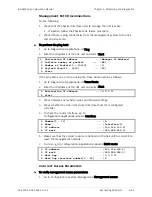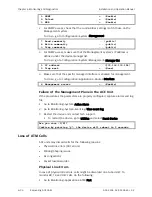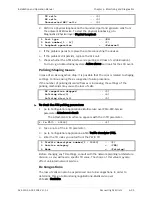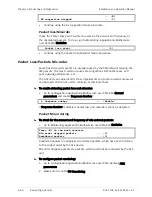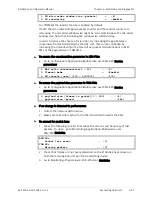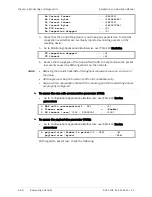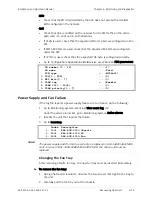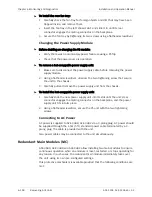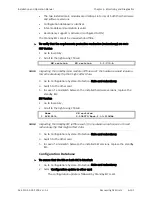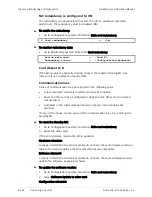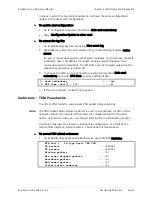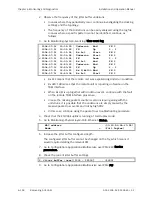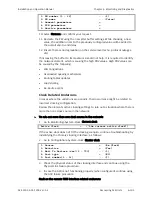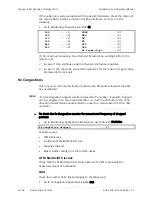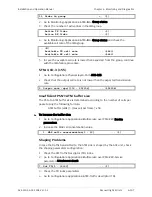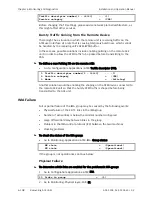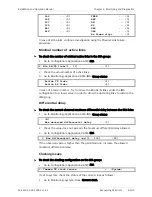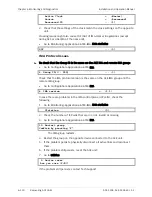
Installation and Operation Manual
Chapter
6 Monitoring and Diagnostics
ACE-3105, ACE-3205 Ver. 5.2
Recovering ACE Units
6-95
TX cells ... (0)
RX cells ... (0)
Uncorrected HEC cells ... (0)
2.
Perform a physical loopback on the monitored port and generate cells from
the adjacent ATM device. To start the physical loopback, go to
Diagnostics>Physical layer>Physical Loopback.
1. Port type > (E1)
2. Port number[1 - 16] ... (1)
3. Loopback operation > (External)
3.
If the problem persists, replace the cable connecting the devices.
4.
If the problem still persists, replace the ACE unit.
5.
Check whether the ATM interface is reporting LCD (loss of cell delineation).
To do so, go to Monitoring>System>Active alarms and look for the LCD event.
Policing/Shaping Issues
In case of an Rx congestion drop, it is possible that the error is related to shaping
settings. Continue using the Rx congestion failure procedure.
If the number of policing discarded frames is increasing, the settings of the
policing mechanism may cause the loss of cells.
RX congestion dropped ... (0)
Policing disc(0) ... (0)
Policing disc(0+1) ... (0)
³
To check the ATM policing parameters:
1.
Go to Configuration>Applications>Multiservice over PSN>PW>Service
parameter>Attachment circuit.
The Attachment Circuit menu appears with the In TD parameter.
6. In TD[0 - 99999] ... (3)
2.
Take a note of the In TD parameter.
3.
Go to Configuration>Applications>ATM>Traffic descriptor (TD).
4.
Enter the TD index you noted from the PW In TD.
1. Traffic descriptor number[1 - 99999] ... (3)
2. Service category > (CBR)
3. Mode > (Policing)
Before changing any TD settings, consult with the network planning /architecture
division, as you will need a specific TD value. The choice of this value may also
affect unrelated network services.
Rx Congestions
The loss of cells can also be experienced due to Rx congestions. In order to
determine this, go to Monitoring>Applications>Multiservice over
PSN>PW>Statistics.

